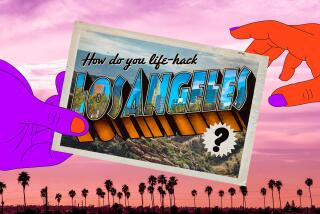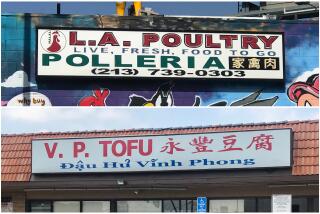ICONS
- Share via
They line the freeways of Chicago and Detroit, Seattle, D.C. and even Toronto. So why do changeable message signs have “L. A.” written all over them? With a little help from cameo roles in films such as “L.A. Stories,” these heralds of chaos have gone from eyesore to icon in less than 20 years. Not bad for a mere 48 signs.
The original 25 signs went up on the Santa Monica Freeway in April, 1973, at a cost of $1.14 million. Spaced half a mile apart--much too closely, later research found--they were (and still are) operated around the clock by the L. A. Traffic Center, jointly staffed by Caltrans and the CHP.
The signs are left blank when not issuing advisories, a policy instituted in 1979 to save energy and stave off criticism that drivers were being badgered by public safety messages. The signs identify traffic incidents, construction closures, maintenance and special events. There are now two types of signs. The original versions (now numbering 29) use light bulbs and cost from $85,000 to $100,000 to install and about $5,000 a year to maintain. Another 18, installed before the 1984 Olympics, are of the “flip disk” variety. These cost roughly $65,000 to $85,000 to install and about $4,000 annually to maintain. There is also one experimental fiber-optic model.
The signs are programmed at the Traffic Operations Center based on reports from witnesses, Caltrans and CHP personnel and closed-circuit TV cameras. The lag between an incident and an advisory ranges from three to 15 minutes. Reports that the signs have transmitted messages from Elvis remain unconfirmed.
More to Read
Sign up for Essential California
The most important California stories and recommendations in your inbox every morning.
You may occasionally receive promotional content from the Los Angeles Times.










